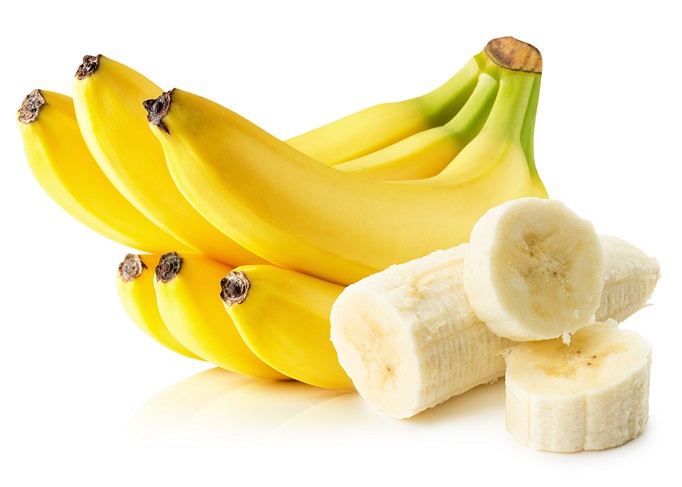
Get Childhood Constipation Moving!
By nutritional therapist Katharine Tate, an expert in family health and nutrition
Childhood constipation is extremely common and depending on measures used it is believed to affect between 5-30% of the child population. Symptoms include a reduction of bowel movements, faecal incontinence and a change of stool consistency.
Individuals have different bowel times but optimal transit is between 12-24 hours. As constipation slows transit time problems can be caused as putrefied material stays in the colon longer, which can increase toxins along the intestinal wall. This increase in toxins can also affect absorption of nutrients and can deprive the body of its requirements for energy and vitality.
Malabsorption also increases the risk of toxins being reabsorbed into the body rather than eliminated, which can be linked to other symptoms such as fatigue, aching joints, low immunity, mental sluggishness, irritability and headaches.
Sweetcorn test: A simple test for assessing transit time is giving your child a good portion of sweetcorn and observing when it’s eliminated. Ideally it will be 12-24 hours.
As a parent it’s important to address the underlying causes of constipation and break what can become a vicious cycle for some children, due to pain when passing stools and then reluctance to go to the toilet. Ensuring your child is well hydrated and their diet contains adequate fibre and helpful nutrients such as vitamin C, magnesium and probiotics is a great starting point. Use some of my top tips below to get things moving!
Soluble fibre: Increase wholegrains in the diet and reduce processed grains (white bread, pasta, cereals), which can slow the passage of food through the digestive system. Wholegrains will increase a feeling of fullness and help to control blood sugar levels. Remember to increase fibre rich foods slowly in the diet and read more about fibre here.
Include:
Oats – porridge, home-made sweet/savoury flapjacks, smoothies
Brown rice – risotto, kedgeree, egg fired
Beans and chickpeas – hummus, mashed beans (alternative to potato)
Vegetables – steamed, apple and parsnip mash, stir fried
Fruit – stewed apples
Insoluble fibre: This includes cellulose and lignins found in nuts, flax, rye, seeds and some vegetables and these add volume to stools by holding water and improving transit time. Linseeds are a fantastic sources as they are high in fibre and can help to regulate stools. They feed the beneficial gut bacteria, which also supports the immune system.
Include by:
Stirring into porridge
Adding to yoghurts
Including in flapjack recipes
Adding to smoothies
For younger children (6 months to 2 years) you can use flaxseed oil as above.
Vitamin C: Increasing vitamin C rich foods can help to soften stools and reduce transit time.
Include:
Foods such as peppers, dark green leafy vegetables, kiwi, broccoli and berries.
Magnesium: This is required for peristalsis, the rhythmic relaxation and contraction of muscles and research suggests that over 50% of the general population do not consume adequate levels. Read more about the importance of magnesium here.
Include:
Leafy vegetables, wholegrains, nuts, seafood, sea vegetables, legumes. Add Epsom salts to your child’s bathwater and before bed rub magnesium oil onto their abdomen.
Pro and prebiotics: Probiotics are the bacteria that help  support the natural balance of organisms most notably in the intestines, whilst prebiotics help to nourish and stimulate the growth of these bacteria. Read more about them here.
support the natural balance of organisms most notably in the intestines, whilst prebiotics help to nourish and stimulate the growth of these bacteria. Read more about them here.
Include:
Probiotic rich foods such as cottage cheese, kefir, olives and yoghurt.
Prebiotic foods such as asparagus, bananas, garlic, honey, leeks, legumes, onions, peas and yoghurt.
Hydrate: Consuming plenty of water daily supports the absorption of nutrients, flushes waste and toxins from the body and can helps to prevent constipation. Read more about the signs of dehydration and how to encourage good habits here.
Listen to your body: Encourage your child to recognise the signs that they need to go to the toilet. By following their bodies signals they will help things to work normally. If we choose to hold on the rectum can get stretched and then our usual signals can become supressed. Encouraging children to sit on a potty or toilet in the morning can be worthwhile and help them to read the signs that they need to go.
Active: Keeping active is important for getting the digestive system moving.
Be Aware: Look out for possible irritants and look to reduce or avoid any triggers. These may include wheat products, milk or other dairy products.
 About Katharine Tate
About Katharine Tate
The Food Teacher, Katharine Tate, has worked as a teacher and education consultant internationally in primary and secondary schools for over 20 years. Qualified as a registered nutritional therapist, Katharine, combines her unique education and nutrition expertise to offer schools, organisations and families advice, education programmes, practical workshops, and individual/family clinical consultations.
Katharine also presents The Food Teacher show on UK Health Radio where she discusses the importance of food for health and wellbeing. She has published 2 books: Heat-Free & Healthy and the award-winning No Kitchen Cookery for Primary Schools. Look out for The Food Teacher at food festivals and events throughout the country during 2017.
For more information, visit her Facebook page, follow her on Twitter or email her at info@thefoodteacher.co.uk. You can also visit her website to find out more and subscribe to her newsletter.